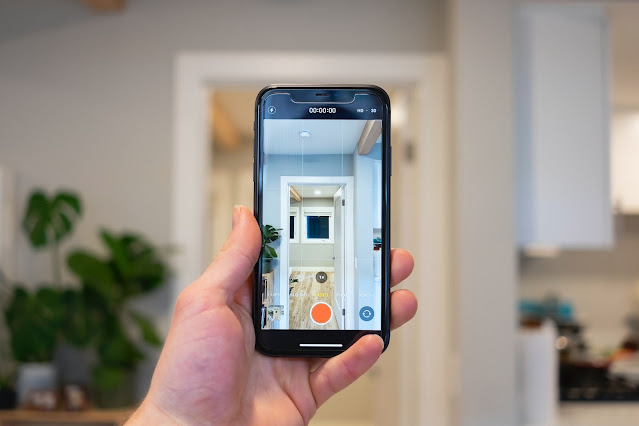Guest Author: Serena
Oakwood
If you want to sort out your living situation, you need to be familiar with your options. So, let’s go over renting vs. buying: navigating the San Antonio housing market.
Arguments for renting in San Antonio
Flexibility and mobility
Flexibility and mobility are compelling reasons to rent in the San Antonio housing market. When you rent, you have the freedom to relocate without the cumbersome process of selling a property, making it an ideal option for those unsure about their long-term plans in this vibrant city. Whether you're chasing new career opportunities, seeking a change of scenery, or just exploring different neighborhoods, renting allows you to adapt swiftly to life's twists and turns. Plus, with San Antonio's diverse rental options, you can easily find a place that suits your needs and budget, giving you the ultimate flexibility to craft your ideal living situation. So, renting might be your best bet if you value the ability to pack up and go when adventure calls.
Lower upfront costs
When discussing renting vs. buying in San Antonio, the former has a significant advantage in lower upfront costs. When you rent a home or apartment, you're not burdened with the down payment that comes with buying a property. This financial relief allows you to allocate your resources more flexibly. Moreover, renters are spared from the often unexpected and costly maintenance and repair expenses that homeowners may encounter. You won't have to worry about shelling out for a new water heater or fixing a leaky roof. Those responsibilities fall on the landlord! This financial predictability ensures that your budget stays stable, reducing the stress of costs like property taxes and insurance premiums. This financial flexibility enables you to direct your funds toward other essential aspects of your life.
Predictable monthly expenses
One of the key advantages of renting in San Antonio is the predictability of monthly expenses. When you rent a property, you're typically locked into a stable monthly rent payment, which makes budgeting a breeze. Unlike homeowners who may face fluctuating mortgage rates or unexpected repair costs, renters enjoy financial consistency. Your rent remains unchanged throughout your lease term, offering peace of mind and financial stability. And you wouldn't need to worry about things like air conditioner maintenance or similar expenses. This naturally allows you to plan your finances more effectively over the long term. Therefore, saving for future goals or allocating funds to other aspects of your life is easier.
Diverse rental options
San Antonio's housing market offers an enticing advantage: diverse rental options. Whether you're searching for an apartment in the heart of the city, a cozy house in a family-friendly neighborhood, or a trendy condo with all the amenities, San Antonio has it all. The variety of rental choices ensures you can find a living space that aligns with your lifestyle and budget. Plus, with how cheap moving from California to Texas and hiring interstate movers is, the cost of local moving is even more affordable. So, you don't need to worry about the expenses of switching between the rentals, either. This diversity doesn’t only cater to different tastes and preferences. It also allows you to adapt your living situation as your needs change over time!
Arguments for buying in San Antonio
Equity and wealth-building
Investing in a home in San Antonio comes with a promising opportunity: equity and wealth building. When you purchase a property, you're not just securing a place to live but making a long-term investment! Over time, the value of your property can be appreciated, potentially resulting in substantial gains. This growing equity can be a financial cushion or a source of wealth. Furthermore, in addition to the satisfaction of homeownership, paying down your mortgage contributes to the gradual accumulation of equity in your home. And this can be tapped into through home equity loans or refinancing. These financial tools can help you achieve personal goals like home improvements, debt consolidation, or funding education.
Long-term financial stability
The latter offers better long-term financial stability when picking between renting and buying. With a fixed-rate mortgage, your housing costs remain stable over time, protecting you from the impact of rising rental prices. You won't have to worry about unpredictable spikes in your monthly payments, providing you with security and predictability. So, if you're seeking a solid financial foundation and a hedge against inflation, homeownership in San Antonio can provide the stability you need to build a brighter financial future.
Personalization and control
Embracing homeownership in San Antonio offers a unique advantage: personalization and control. When you own a property, you have the liberty to shape it according to your desires. You can paint the walls, remodel the kitchen, or even transform the backyard into a tranquil oasis—all without the restrictions imposed by a landlord. This level of control allows you to create a living space that truly reflects your personality and lifestyle. Additionally, you have the autonomy to make decisions about your property's maintenance and improvements. You can invest in energy-efficient upgrades, enhancing your home's sustainability and lowering utility bills. Furthermore, in the era of virtual tours and online resources, you can thoroughly check out a property before committing either way, even if you can't visit in person. This enables you to make informed decisions about your new home, ensuring it aligns perfectly with your vision and requirements.
Tax benefits
When choosing between renting vs. buying, tax benefits need to be acknowledged. You may qualify for mortgage interest and property tax deductions as a homeowner. These deductions can lead to significant savings when it's time to file your annual tax return. Mortgage interest deductions allow you to subtract a portion of the interest paid on your mortgage from your taxable income. This reduces your overall tax liability, putting more money back into your pocket. Property tax deductions work similarly, enabling you to deduct the property taxes you pay to the local government.
Furthermore, for some homeowners, there are additional tax benefits related to home improvements that enhance energy efficiency, like solar panels or energy-efficient windows. These upgrades can qualify you for federal tax credits, providing even more financial relief. So, homeownership offers a range of appealing benefits.
Factors to consider when deciding
Several crucial factors come into play when navigating the San Antonio housing market. To make an educated choice, consider your current and future financial situation. Assess how long you plan to stay in San Antonio and how your lifestyle and housing preferences may evolve. Keep an eye on market trends and real estate conditions, as they can impact your investment. Lastly, align your decision with your personal goals and priorities, whether it's building equity, enjoying financial flexibility, or being an active member of a community. By carefully weighing these factors, you can navigate the local housing market confidently, ensuring your choice aligns with your unique circumstances and aspirations, ultimately leading you to the right path for your housing journey!
Making plans for your real estate journey
With our analysis of navigating the San Antonio housing market, you can make the best choice for you. Remember, whether it suits your budget and lifestyle makes the choice ‘perfect’! So, focus on those two things when making your plans.
Author Bio:
Serena Oakwood is a freelance writer interested in the San Antonio real estate market. With a keen eye for market trends, Serena has written many guides about real estate tips and tricks. In her free time, she enjoys making colorful pastries with her daughter.
Picture Link:
https://unsplash.com/photos/744oGeqpxPQ


.jpg)





.jpg)







.jpg)
